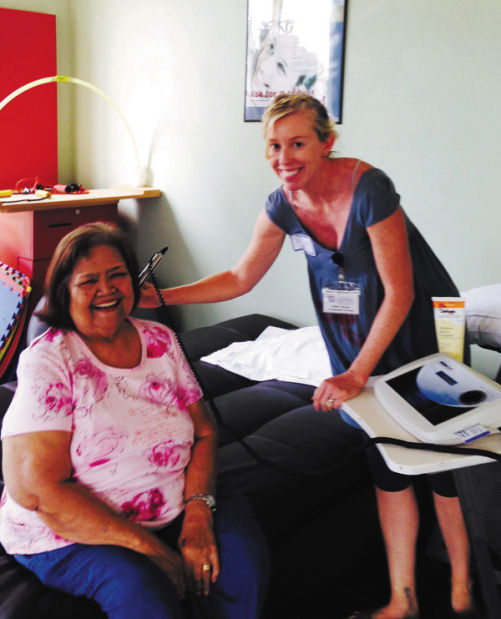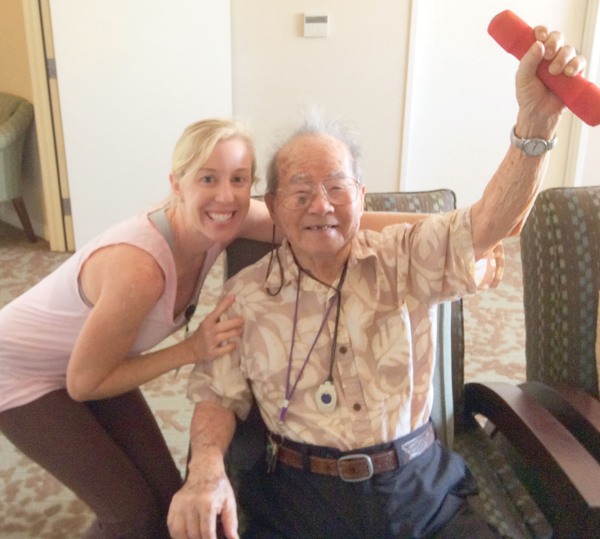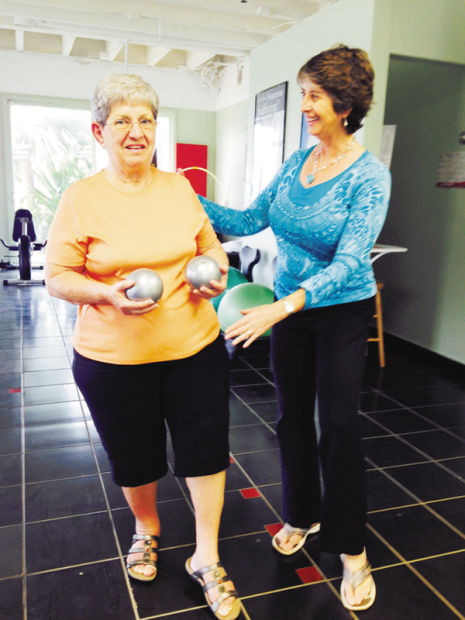At Kauai Therapy & Wellness, we are advocates for our aging population in remaining active, independent and strong. Our highly trained therapists work not only with patients experiencing varied physical difficulties, they also encourage an active, pain free lifestyle. In
At Kauai Therapy & Wellness, we are advocates for our aging population in remaining active, independent and strong. Our highly trained therapists work not only with patients experiencing varied physical difficulties, they also encourage an active, pain free lifestyle. In honor of occupational therapy month, I would like to share with you ways we can help you age stronger, safer, while maintaining your independence and pain-free.
Maintaining your mobility, strength and flexibility should be a priority. We lose all of that as we age, thus it becomes more important to exercise as we get older. Starting or maintaining a regular exercise routine can be a challenge as you age. You may feel discouraged by illness, ongoing health problems, or concerns about injuries or falls. If you’ve never exercised before, you may not know where to begin. Perhaps you think you’re too tired or frail, or that exercise is simply not for you. Don’t worry, we can help you.
At Kauai Therapy & Wellness, we strive for hands-on care. People with weakness, injuries, and chronic pain need someone with skilled training to put their hands on them and restore balance, endurance, relief and strength. We utilize solutions which involve no side effects, no drugs and no surgery. We encourage you to improve on your own — to get better faster as you see pain relief results, strength, and independence be restored.
Our aging population most often suffers from arthritis, back pain and falls.
Arthritis
Arthritis is defined as the presence of swelling, the presence of effusion (The escape of fluid into another part), or the presence of two or more of the following signs: limited range of motion, tenderness, pain on motion, or joint warmth. Degenerative changes are common in neck or cervical spine. In some degree they are found almost universally in persons over 50 years of age.
Statistics: Osteoarthritis of the neck is one of the most common forms of neck pain for people over the age of 50. While a past neck injury can lead to neck osteoarthritis years later, aging is the major risk factor or cause of neck osteoarthritis. Seventy percent of women and 85 percent of men have x-ray evidence of neck osteoarthritis by age 60. Treatments for arthritis are usually nonsurgical and is usually treated conservatively.
Do’s /Don’ts: Balance activity with rest. Ensure that your neck is supported at work, in the car and during your leisure time with a good pillow or chair. Check the height of your desk and chair at work and at home, and make sure that a computer screen is at eye level. Avoid slouching in your standing position. Do not bend your neck forward or keep it in the same position for hours at a time.
Back pain
The bones (vertebrae) that form the spine in your back are cushioned by round, flat discs. When these discs are healthy, they act as shock absorbers for the spine and keep the spine flexible. If they become damaged, they may bulge abnormally or break open (rupture), in what is called a herniated or slipped disc. Statistics show herniated discs that reside in the cervical (neck) and lumbar (back) spine respond positively to conservative treatment and can sometimes regress or reabsorb.
Do’s/Don’ts: Learning from our skilled therapists how to practice proper posture, incorporating back stretches and proper exercises into your daily routine, adjusting the way you move, work, and creating an ergonomic work station into your office or home. Avoid lifting and balance the proper exercises with rest.
Fall prevention
Falls among the aging are prevalent, dangerous, and can diminish the ability to lead an active and independent life. About one in three over the age 65, and nearly one in two over age 80, will fall at least once this year, many times with disastrous consequences. Physical and occupational therapists can help prevent falls with evaluation of the home for safety and development of individualized treatment plans including exercises to improve strength, mobility, and balance.
Maintaining physical activity is critical in helping to prevent falls. Our therapists recommend activities of any fitness level, including gardening and Tai Chi to help improve balance and movement.
As we age, our balance may be improved with exercises that strengthen the ankle, knee, and hip muscles and with exercises that improve the function of the vestibular (balance) system. If you are unsure or a have a loved one who may be at risk for falls, don’t wait. We can help.
Do’s/Don’ts: Get up slowly from your bed or chair. Sit on the edge of the bed for a few minutes before standing. Sit up or stand up slowly to avoid sudden changes in blood flow to your head that can make you feel lightheaded. Maintain eye health with an annual eye exam and have a pharmacist assess all your medications to make sure there are no interactions which may affect balance. Do have a licensed therapist perform a home safety assessment and provide needed recommendations such as grab bar installation, adequate lighting, and removal of throw rugs.
By incorporating these tips into your lifestyle, you are one step closer to being stronger, safer, maintaining your independence and pain-free.
• Mindy Murray is an occupational therapist with Kauai Therapy & Wellness & In-Home Services, 3-1866 Kaumualii Highway, Lihue. (808) 333-3688, www.kit-therapy.com or aloha@kauaihometherapy.com




